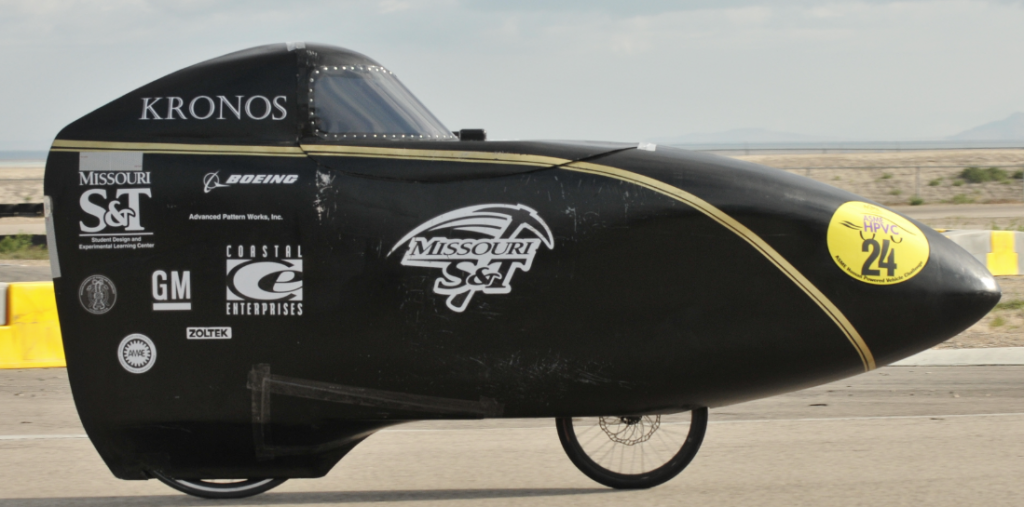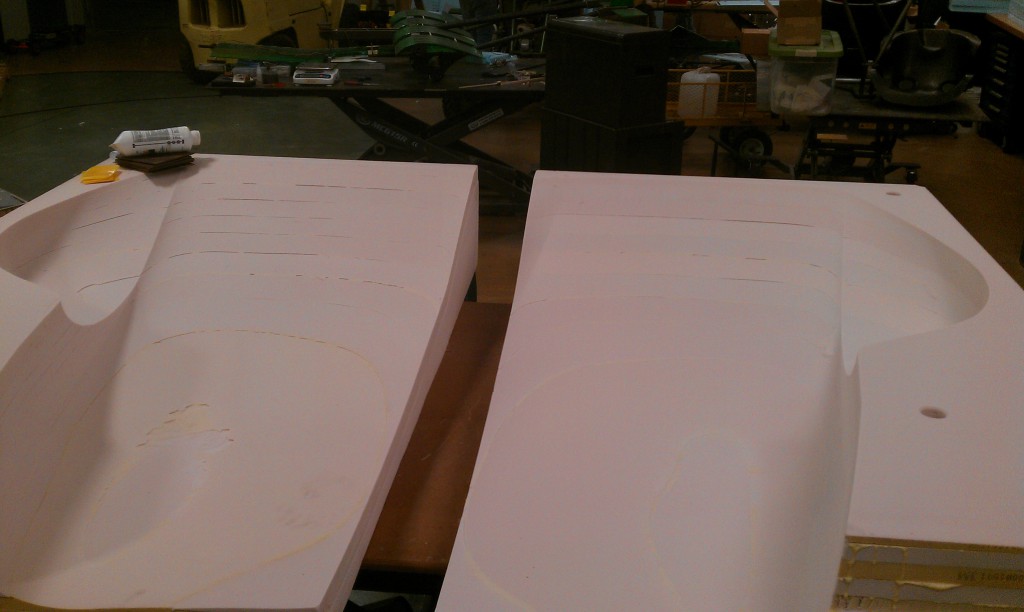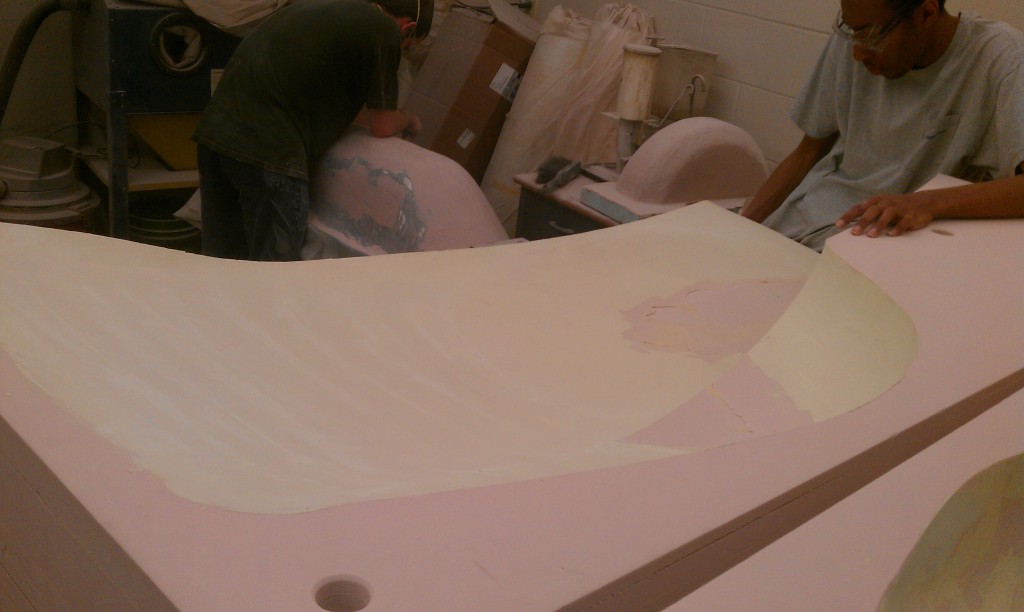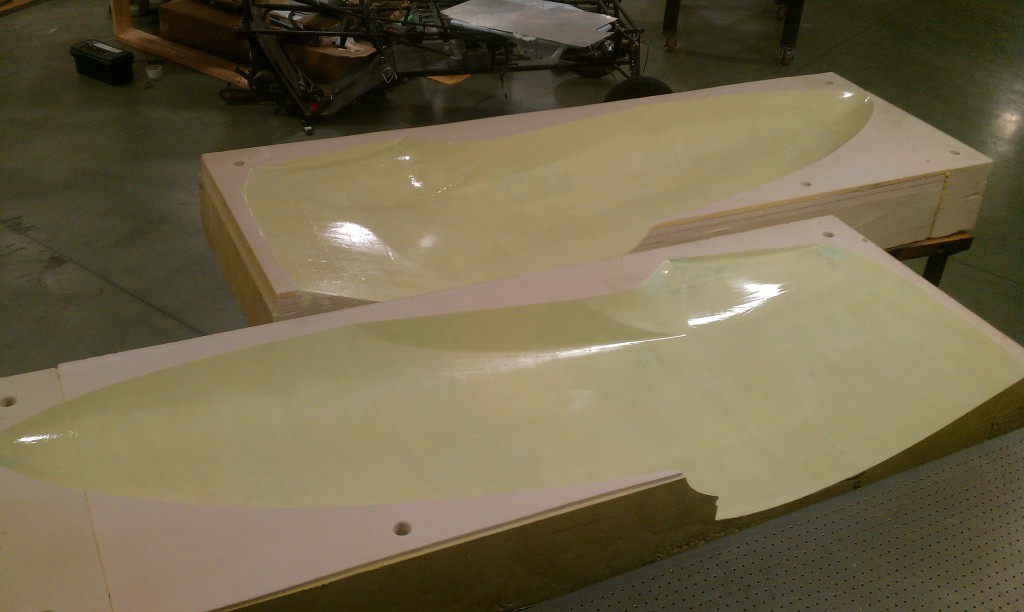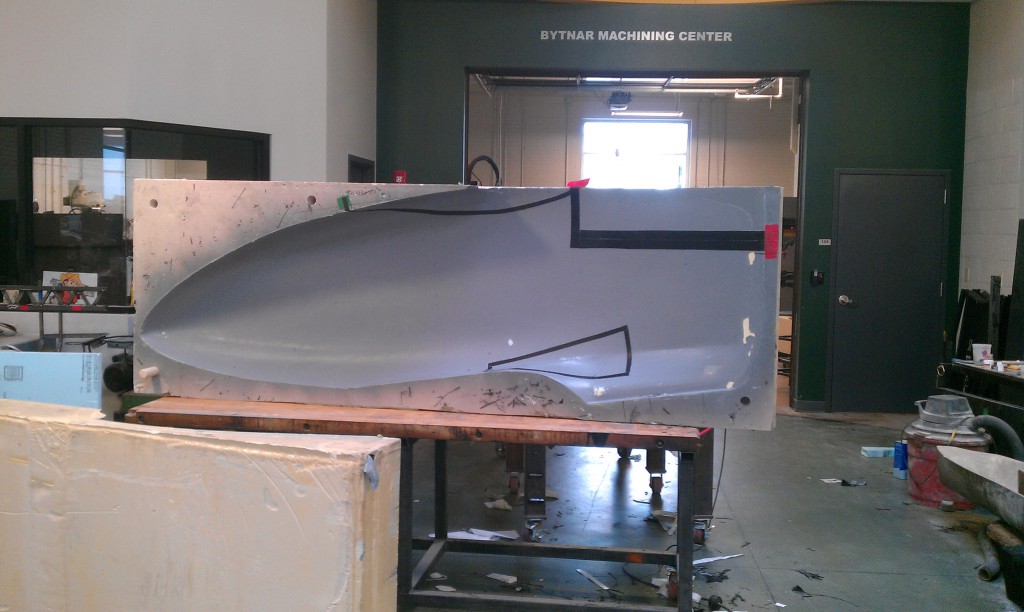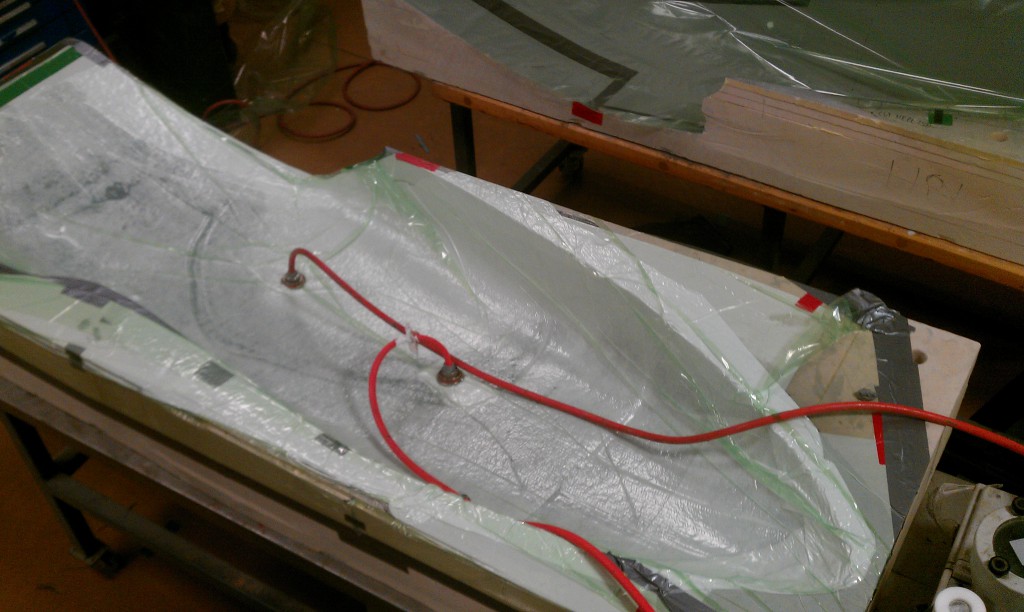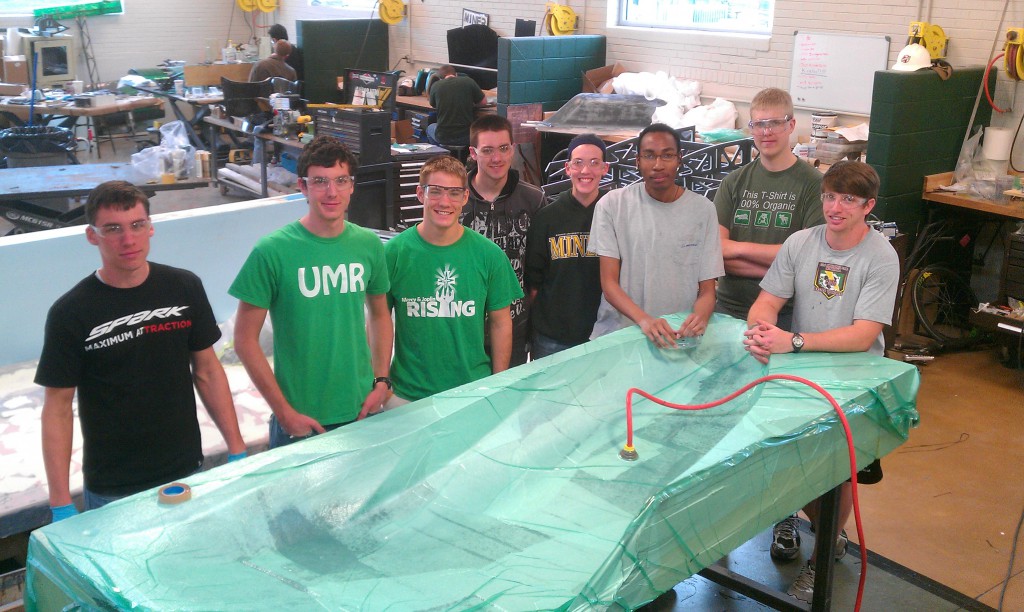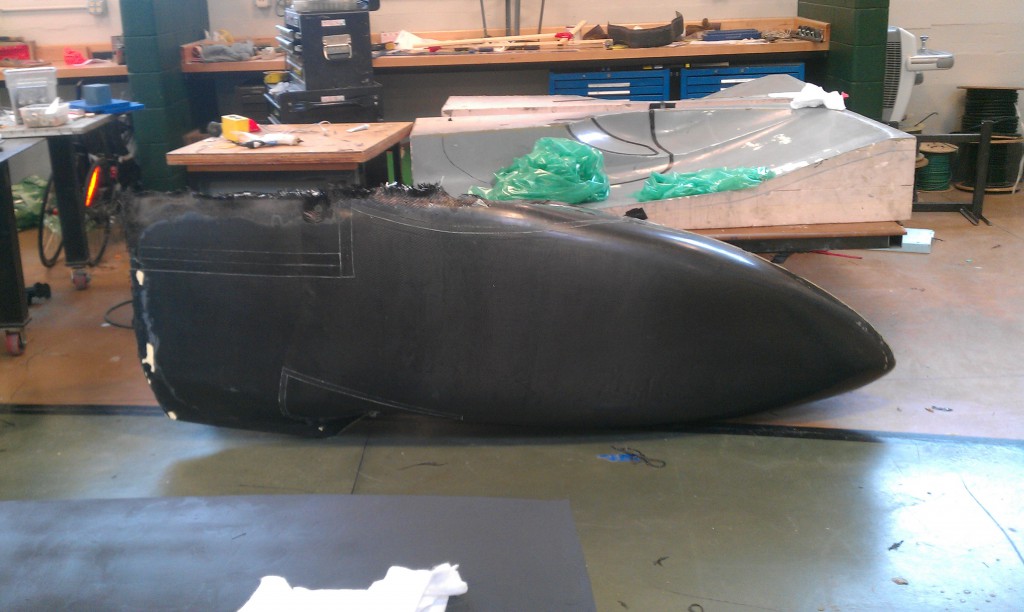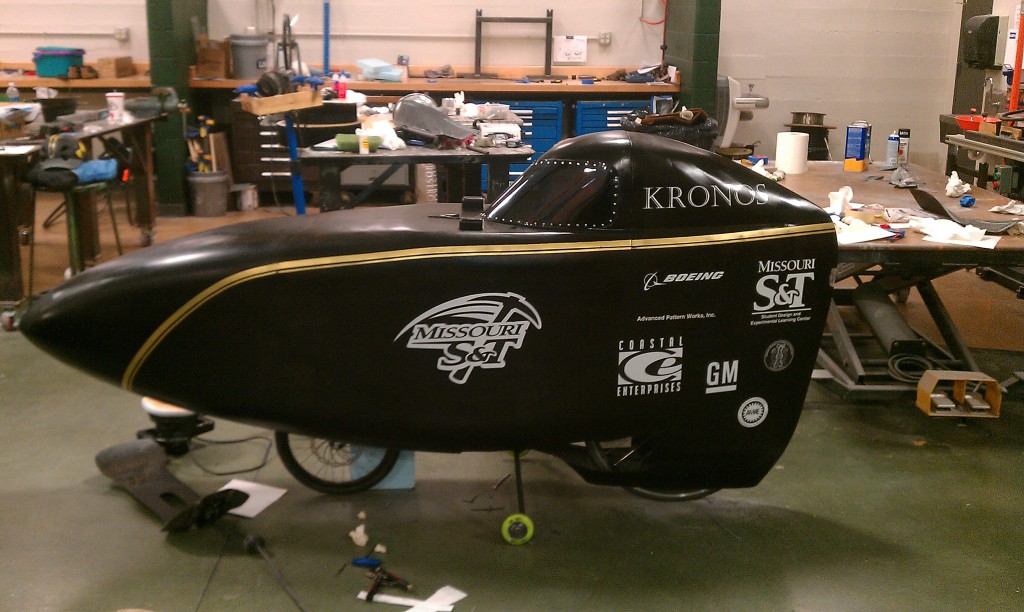How do you design a champion Human Powered Vehicle? Jonathan Sanders, Fairing Engineer of the University of Missouri Human Powered Vehicle Team gave me the details of this years competition winning build.
Background of the HPVC challenge:
Designed to provide an opportunity for students to gain valuable design team experience, the Human Powered Vehicle Challenge (HPVC) is a yearly competition put on by the ASME, or American Society of Mechanical Engineers. The HPVC sets the stage for students to demonstrate engineering design skills in the development of sustainable and practical transportation alternatives. As an all volunteer project with no school credits that will be awarded, members of these HPVC teams are all extremely dedicated and knowledge-thirsty students.
Design/Build:
Since the car will be powered entirely by the human driver, the Human Powered Vehicle is going to need to be quite aerodynamic – especially if it is going to be entered into competition drag races against over 30 different college teams. A key part of the design process is constructing the fairings, of which the master molds were made out of donated Precision Board Plus PBLT-10.
This was the first time University of Missouri students had used Precision Board Plus to construct the fairing molds. Last year they used insulation foam, fiberglass, and bondo, which has a high room for error, especially for newer students. According to Jonathan: “the high level of accuracy and time saved by using Precision Board Plus was a huge improvement over previous techniques, and the team cannot wait to use it again next year.” Jonathan was even kind enough to detail this years mold making process for constructing the fairings for us:
1. Acquire the basic criteria for the vehicle based on the released rules
2. Design and test a prototype frame and make necessary changes
3. Fabricate the prototype frame
4. Acquire rider data by taking rider body part measurements and determining range of motions of each rider by taking motion capture photos of each rider on the bike with high interest points marked by high output LED’s.
5. Construct a computer rider model using the rider data.
6. Using the model, construct a basic vehicle fairing (take into account thickness, mounts, clearances, etc.)
7. Run iterations of CFD by changing certain aspects of the fairing until the final fairingis completed.
8. Using the final model of the fairing, design models of the molds and create blocks of Precision Board Plus that correspond to the computer models.
9. Using the computer files, 5 axis CNC the molds
10. Remove any remaining machining marks in the foam, apply a surface hardener to the molds, and then finish the surface of the molds.
11. Lay-up the fairing in the molds using a wet layup and vacuum bag method and seam the fairing together accordingly once the parts have fully cured.
12. Mount the fairing to the frame and check clearances.
13. Remove the fairing, make paint preparations as necessary, and then paint.
14. Re-mount the fairing.
One of the key lessons Jonathan learned from his involvement with the Human Powered Vehicle Team is that many ideas are limited only by manufacturing capability. For example, last year students had a great idea of building a hollow crank to save on overall weight. However, a veteran team member pointed out that they were using 7075 T6 Aluminum, which is a non-weldable metal. Not wanting to give up, they began researching possible methods to remedy this.
What they found was a form of welding known as Friction Stir Welding, which uses lots of heat and friction to join metal without actually melting it or changing the properties, and is also the highest-strength welding technique available. As luck would have it, a different department at the University was doing work using Friction Stir Welding, and had the equipment needed. Unfortunately, after the initial crank was built, it was discovered during testing that it was slightly deformed beneath the weld, rendering it unusable. However, they were able to carry the experience gained over to this years build, where they successfully used a hollow crank made from Titanium and stir-welded.
In the car experience:
When asked about his experience as one of the drivers, Jon mentioned that “inside the car it is a very tight fit, but it is quite enjoyable to drive.” Top speed on a sprint run is about 45 MPH, and with a skilled driver and long straightaway, these vehicles could go as fast as 60MPH! All of the drivers are secured with a 4-point racing seatbelt, and each car is designed to withstand hundreds of lbs. of concussion force in the event of a crash.
Competitions:
Each year the HPVC has 2 different events: East and West competitions, which consist of several races at each event. The races are determine by finishing position, and the overall award is determined by total points from all of the races and the design competition. There are several different scoring events:
1. Design – 40% of total score. They placed 4th in the East Coast competition and 5th in the West Coast competition.
2. Female Drag Races – 15% of total score. Suffered a mechanical failure at the East Coast competition and still finished 2nd place. Took 1st place at the West Coast competition.
3. Male Drag Races – 15% of total score. Placed 1st at both the East and West Competitions.
4. Endurance Race – 30% of total score. 2.5 hour endurance race with 4 drivers for each vehicle. Finished 1st at to both East and West competitions.
Won the overall award for the West Coast competition and took second place to Rose-Hulman Institute of Technology by a single point.
In an interesting and rare turn of events, the University of Missouri and Cal Poly actually ended up tying in points at the West Coast Competition for the overall award. The University of Missouri ended up breaking the tie by winning all of the races. Congratulations to the University of Missouri for a job well done!
An excellent video of the HPV can be seen at: http://vimeo.com/41952419
Pictures from the fairing build process:
